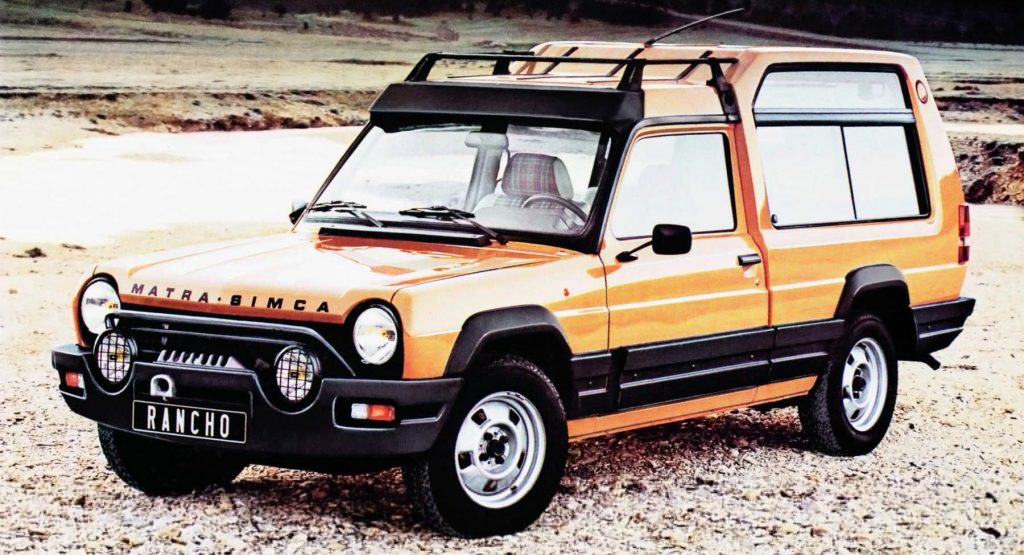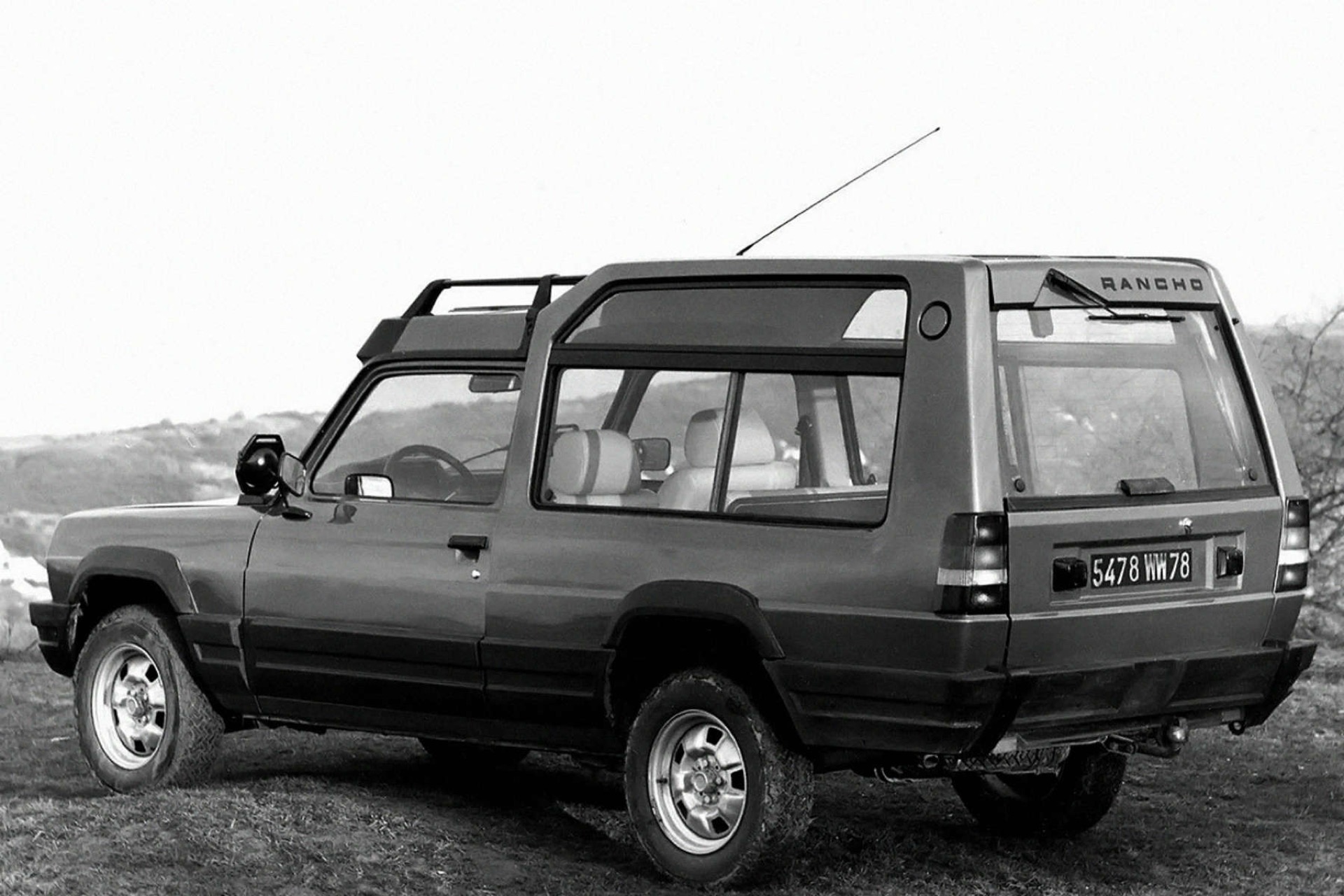The Matra-Simca Rancho was a crossover that appeared in 1977, decades before anyone had thought up the term. Back then, it was known as a “lifestyle” vehicle, and in many ways, it set the template for motoring designs of the future.
The Rancho was marketed as a LAV (Leisure Activity Vehicle) and was a curious mix of van, pickup, and car bits melded together to create something that, at the time, was considered quite novel. The Rancho’s design borrowed certain cues from the first-generation Range Rover, itself a relatively novel offering in a world still stuck with sedans and economy hatchbacks. Ironically, Land Rover would seemingly borrow back aspects of the Rancho’s design when it came to creating the first-generation Discovery some 15 years later.
The Rancho was manufactured with both steel and glass fiber. It was essentially an extended Simca 1100 pickup truck, with many components from other Simcas as well. Powering it was a transverse-mounted 1442 cc engine, and for brakes, it had disks at the front and drums at the back. Perhaps most surprising was that its designers were quite serious about equipping the Rancho for off-road use. As the video from Furious Driving points out, it was equipped with a fair amount of protection underneath, including multiple skid plates and a double-walled fuel tank.
Read: Take A Look At This Virtually Brand New 1980 Talbot Lotus Sunbeam
Apart from the ability to engage in some light off-roading, the Rancho was also very practical. The interior is dotted with storage spaces, while it also featured seating for seven. The “grandstand seating” where the second row is placed higher than the front row seats benefited from the somewhat awkward design, providing lots of headroom for occupants. The second and third row of seats could fold if you wanted to use it to carry something like, say, a washing machine, and, for picnics, the Rancho featured a split tailgate, a la a Range Rover.
Production of the Rancho under Peugeot was a bit strained. A replacement was designed, but Peugeot was unwilling to back it. Unfazed, Matra approached Renault with the design of their new minivan. What transpired afterward effectively created an entire class in itself, as Matra conceived and built the first Renault Espace, one of the earliest MPVs.
Sadly, as delightfully quirky as it is, the Rancho remains an oddity that never really saw a true successor. Like most great ideas, it was undoubtedly ahead of its time.





